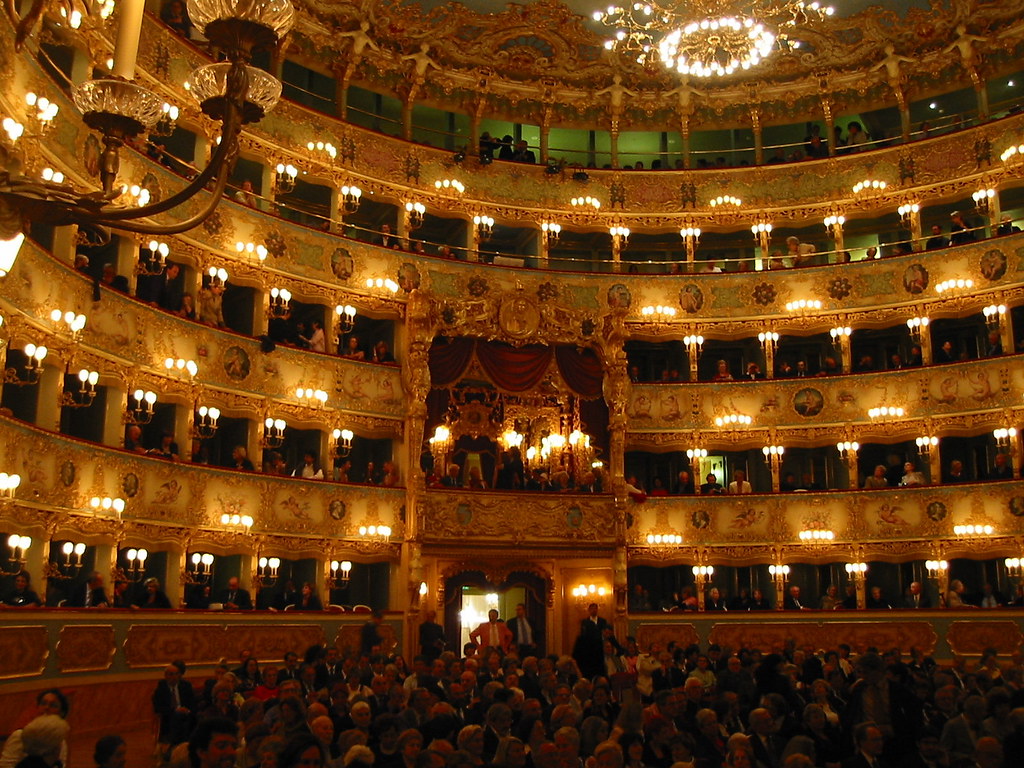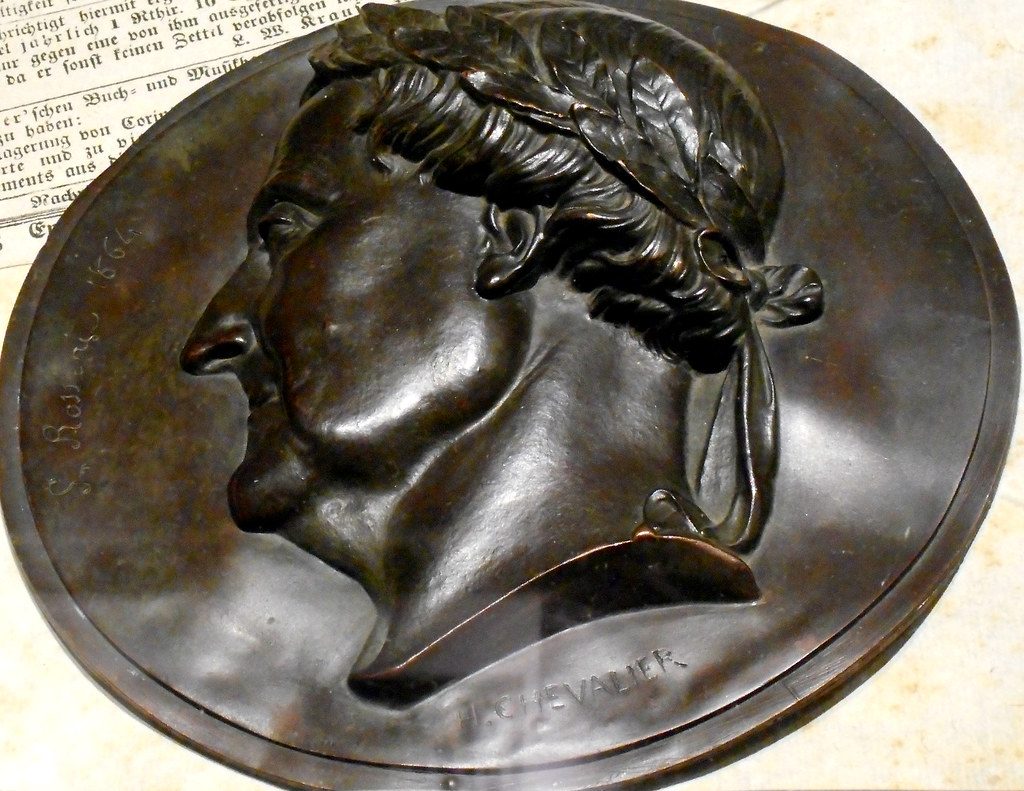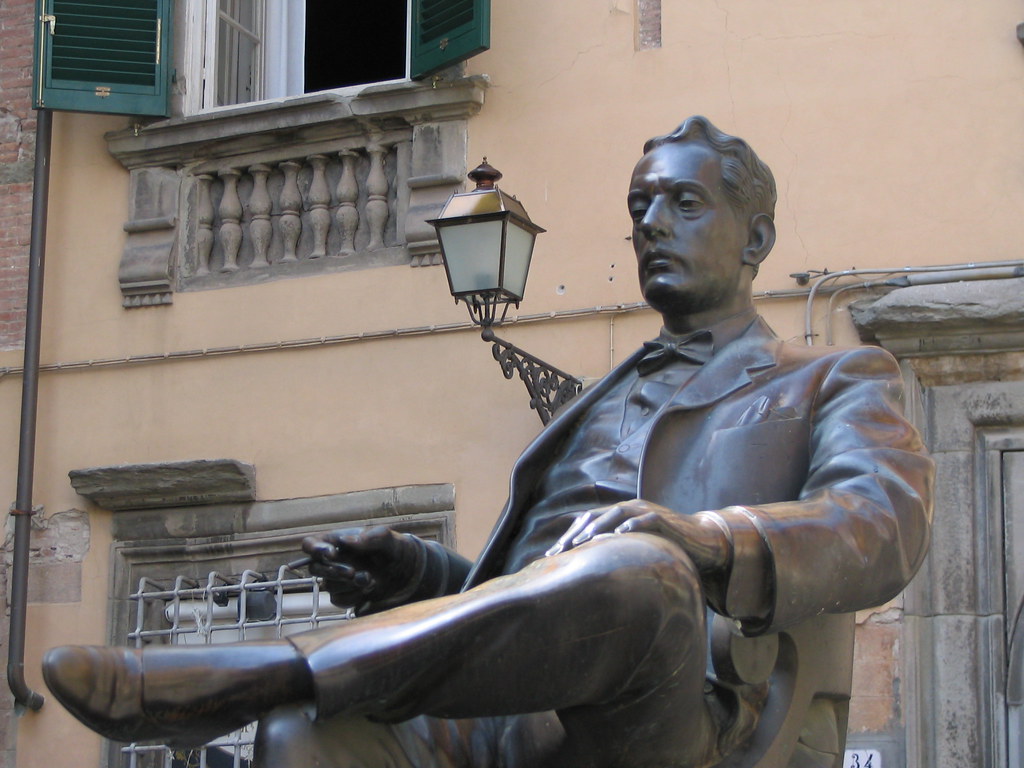Entertainment, music, dance, and magnificent processions with spectacular technical effects and extravagant costumes. The stories (or themes) were taken from classical mythology. Their purpose was often to impress visiting dignitaries and present a positive image of a ruler and his court.

Image source: https://en.m.wikipedia.org/wiki/Italian_opera
Background of Opera
There are comparable art forms from various other parts of the world, many of which are of ancient origin, sometimes also called “opera” by analogy, usually preceded by an adjective indicating the region. These independent traditions do not derive from Western opera but are forms of musical theatre. Furthermore, opera is not the only type of Western musical theatre: in the ancient world, Greek drama involved singing and instrumental accompaniment; and in modern times we find other forms such as the musical.
Inspired by the ancient stories and myths of the Greeks and Romans, drawing parallels between the ruler and mythological gods or heroes, their purpose was often to impress visiting dignitaries and present a positive image of a ruler and his court. They included vast processions, dances, sung episodes, and recited interludes, costumed with elaborate carriages, floats, and stage effects.
In this production, the dancers form geometric patterns on the floor of the theatre before what we would now call the proscenium arch, which is ‘designed’ as a rocky arch.
Italian opera is a musical art form that had its beginnings in Florence in the late 1500s.
It was based on several performance genres including Greek Drama, monody (poems sung by a solo singer with the support of a single instrument), and madrigals (a capella singing by 3-6 harmonizing singers).

Image source: https://search.creativecommons.org/photos/f13948c6-55b3-470d-bb41-6766f795636a by Didier Descouens
The Seeds of Italian Opera
Cristofano Malvezzi (1547–1599) was born in Lucca, Tuscany, but later lived in Florence. There he was maestro di cappella at the cathedral and wrote madrigals and numerous “intermezzi” (the short form of opera) for the Medici family’s entertainments. It’s speculated that he was a member of the Florentine Camerata, a group of progressive musicians and poets who, in attempting to recreate the music of ancient Greece, created the first monody, a forerunner of the aria and essentially the genesis of opera.

Image source: https://search.creativecommons.org/photos/1e75fab3-69c2-44f0-8355-689602a849d7 by baldeaglebluff

Image source: https://search.creativecommons.org/photos/5a09e3e5-5180-4e59-abfd-5fc5cfc387c8 by Miguel Mendez
Opera is born

Image source : https://commons.wikimedia.org/wiki/File:Jacopo_Peri_1.jpg#mw-jump-to-license
The earliest known opera composition is Dafne, written by Jacopo Peri (1561–1633) in 1597. Peri was born in Rome but relocated to Florence to study music. In the 1590s, he met Jacopo Corsi, the leading patron of music in Florence, and they decided to recreate a form of Greek tragedy, following in the footsteps of the Florentine Camerata, which had produced the first experiments in monody. Peri and Corsi invited the poet Ottavio Rinuccini to write a text, and Dafne was the result.
Peri’s later composition, Euridice, written in 1600 with Giulio Caccini, is the earliest surviving opera and was initially performed as part of the celebrations for a Medici wedding, thereby catapulting opera into the mainstream of court entertainment. Peri credited the madrigals of Emilio del Cavalieri as the forerunner of the operatic form.

Image source : https://search.creativecommons.org/photos/320c80d6-944d-40d2-b973-25abc405a832 by Royal Opera House Covent Garden
Claudio Monteverdi (1567 – 1643) was an Italian composer, violinist, and singer considered a crucial figure in the history of music. Having taken over opera from the Florentine “camerata” and introduced the Baroque method of declamation with continuo accompaniment, he enriched it with an unprecedented expressiveness, and moved from the Renaissance ensemble of diverse instruments in “La Favola d’Orfeo“, to an early version of the Baroque ensemble, where specific categories of instruments were used for mood painting.
Opera seria
Literally “serious opera”, it became dominant in Italy and much of Europe. In the works of composers Carlo Francesco Pollarolo and the enormously prolific Alessandro Scarlatti, the influence of this new attitude can be seen.
The aesthetic and poetic ideals of the members of the Accademia dell’Arcadia influenced the artistic and cultural life in Italy and the Arcadian poets brought about many changes to serious musical drama in Italian, including:
- the simplification of the plot;
- the removal of comic elements;
- the reduction of the number of arias;
- a predilection for plots drawn from ancient Classical or modern French tragedy, in which the values of loyalty, friendship, and virtue were exalted and the absolute power of the sovereign was celebrated.
Opera Buffa
The comic genre of opera buffa born in Naples began to spread throughout Italy after 1730.
It was distinguished from opera seria by numerous characteristics:
- the importance is given to stage action and the need for the music to follow the changes of the drama, emphasizing the expressiveness of the words;
- the choice of singers who were also excellent actors;
- a reduction in the use of scenery and stage machinery and in the number of orchestras;
- the use of a small cast of characters (intermezzo) and simple plots, a good example is “La serva padrona” by Pergolesi;
- libretti inspired by commedia dell’arte, with realistic subjects, colloquial language, and slang expressions
- as regards singing: the total rejection of vocal virtuosity; a tendency to mispronounce words; the frequent presence of rhythmic and melodic tics; the use of onomatopoiea and interjections.
The comic opera owed its success to the collaboration between the playwright Carlo Goldoni and the composer Baldassare Galuppi in the second half of the 18th century. Thanks to Galuppi, the comic opera acquired more dignity.
The operas were now divided into two or three acts, creating libretti for works of a greater length, which differed from those of the early 18th century in the complexity of their plots and the psychology of their characters. The most famous work by Goldoni and Galuppi is probably “Il filosofo di campagna” (1754).
The collaboration between Goldoni and another famous composer Niccolò Piccinni has produced another new genre: opera semiseria. In which there were two buffo characters, two nobles, and two “in-between” characters.

Image source:https://search.creativecommons.org/photos/2cbd6bd3-f57a-4a98-a776-4a93c1a2a897
Bel canto, Verdi, and Verismo
The bel canto opera movement flourished in the early 19th century and is exemplified by the operas of Rossini, Bellini, Donizetti, Pacini, Mercadante, and many others. Literally “beautiful singing”, the bel canto opera derives from the homonymous Italian stylistic singing school. The bel canto lines are florid and intricate, requiring supreme agility and intonation control, examples of such operas include Rossini’s “Il barbiere di Siviglia” and “La Cenerentola”, as well as “Lucia di Lammermoor” by Donizetti.

Image source: https://search.creativecommons.org/photos/2822d464-4954-425a-abcf-2ce8c6f51746
After the bel canto era, Giuseppe Verdi popularized a more direct and decisive style, starting with his biblical opera Nabucco. Verdi became an icon of the patriotic movement thanks to his operas the resonated with the growing spirit of Italian nationalism in the post-Napoleonic era.

Image source: https://search.creativecommons.org/photos/4ad33a1d-6d9a-43e2-87b1-c317471a8644 by Royal Opera House Covent Garden
In the early 1850s, Verdi produced his three most famous operas: Rigoletto, Il trovatore, and La traviata. But he continued to develop his style, composing perhaps France’s greatest Grand Opera, Don Carlos, and ending his career with two Shakespeare-inspired works, Otello and Falstaff, which reveal the increased sophistication of Italian opera since the beginning of the 19th century.
Later Italian composers, such as Berio and Nono, experimented with modernism.
The 20th Century

Giacomo Puccini (1858–1924) wrote some of the greatest Italian operas of the 20th century, including Manon Lescaut (1893), which was his first great success, La Bohème (1896), considered one of his best works and one of the most romantics never composed together with, Tosca, and Madame Butterfly (1904), initially struck down, was then reworked to become another of his most successful operas. Born in Lucca in Tuscany, he enrolled at the Milan Conservatory in 1880. Puccini also wrote pieces for orchestra, sacred music, chamber music, and compositions for piano and voice.

Image source: https://search.creativecommons.org/photos/3431518e-4359-449c-a756-3d8474354194 by ConspiracyofHappiness
Italian opera remains a popular form of entertainment throughout the world. The Three Tenors brought the opera to the attention of the general population, and many changed their minds about what this music had to offer. Pieces like Nessun Dorma can influence us in a way that other music cannot.
Info source:
http://www.italianlegacy.com/italian-opera.html
http://www.vam.ac.uk/content/articles/t/early-opera/
http://www.encyclopedia.com/humanities/culture-magazines/italian-opera-seventeenth-century
http://www.newworldencyclopedia.org/entry/Claudio_Monteverdi
https://en.wikipedia.org/wiki/Italian_opera#The_17th_century
https://courses.lumenlearning.com/music/chapter/trends-in-german-and-italian-opera/
Please also visit: https://www.idesign.wiki
